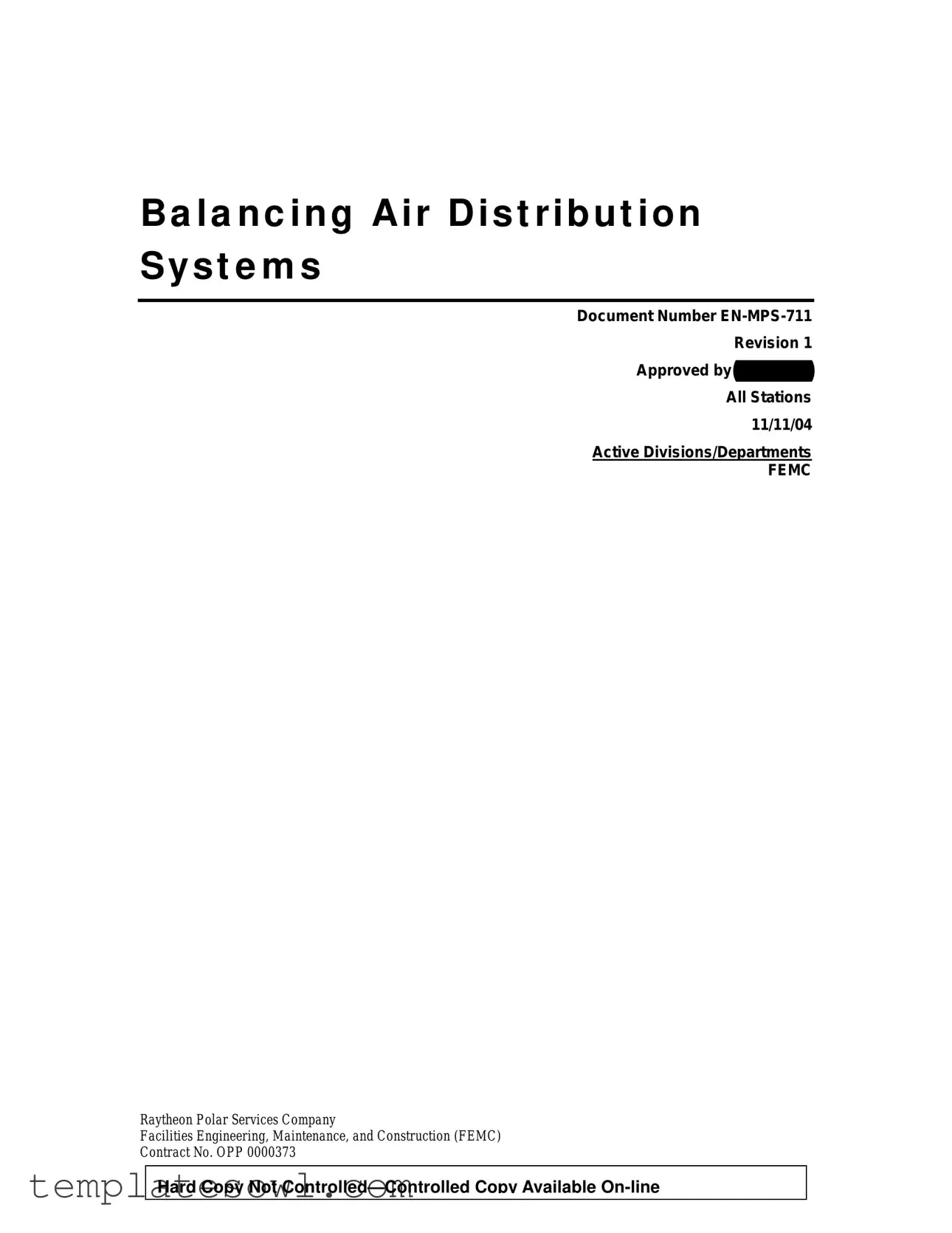Raytheon Polar Services Company |
EN-MPS-711 |
Balancing Air Distribution Systems |
Revision 1 |
Stations |
|
3.Determine the volume of the air being delivered by the fan. Adjust the fan speed to increase or decrease the flow if required. If the speed is increased, ensure the motor is not overloaded. Check total flow with the dampers set to their minimum outside air and again for 100 percent outside air; variation should be within 10 percent.
4.Check fan motor speed, operating amperage and voltage. Calculate break horsepower.
5.Take fan static pressure readings and static pressure across the fan system components; i.e., filters, coils, etc.
System Balancing
1.Using the duct velocity traverse method, adjust the volume dampers to deliver the design airflow in each main, zone, and branch duct. (See the following forms: Air Cooled Condensing Unit (EN-MPS-711a), Air Distribution Test Sheet (EN-MPS-711b), Air Monitoring Station Data (EN-MPS-711d), Air Moving Equipment Test Sheet (EN-MPS-711e), Circular Duct Traverse Reading (EN-MPS-711f), Duct Leak Test (EN- MPS-718a), Duct Traverse Readings (EN-MPS-711i), Duct Traverse Readings Zone Totals Report (EN-MPS-711j), Electric Coil/Duct Heater Test Report (EN-MPS-711k), Exhaust Fan Data Sheet (EN-MPS-711l), Fan & Motor Pulley (EN-MPS-711m), Induction Units (EN-MPS-711o), Oval Duct Traverse Readings (EN-MPS-711r), Return Air/Outside Data (EN-MPS-711s), Sound Level Report (EN-MPS-711u), Terminal Units (EN-MPS-711w), Vibration Test Data Air Handling Unit (AHU 1) (EN- MPS-711y), Vibration Test Data Air Handling Unit (AHU 2) (EN-MPS- 711z), Vibration Test Data Centrifugal Fan (EN-MPS-711aa), Vibration Test Data Utility Fan (EN-MPS-711bb), Vibration Test Vaneaxial Fan (EN-MPS-711cc).)
2.Adjust the individual supply outlets both for air volume and distribution pattern. Follow the manufactures’ recommended procedure, using the proper factor. Use the proportional (ratio) method or other appropriate systematic procedure for outlet balancing. Compare the outlet total flow to the duct traverse previously made; variation should be within 10 percent.
3.Using the same basic procedures for the supply side, balance the return and exhaust systems.
4.Recheck speed, amperage and pressure readings at the fan.
5.Submit Reports. (Air Handler Test and Balance Report (EN-MPS-711a and Test and Balance Report (EN-MPS-712k).)

